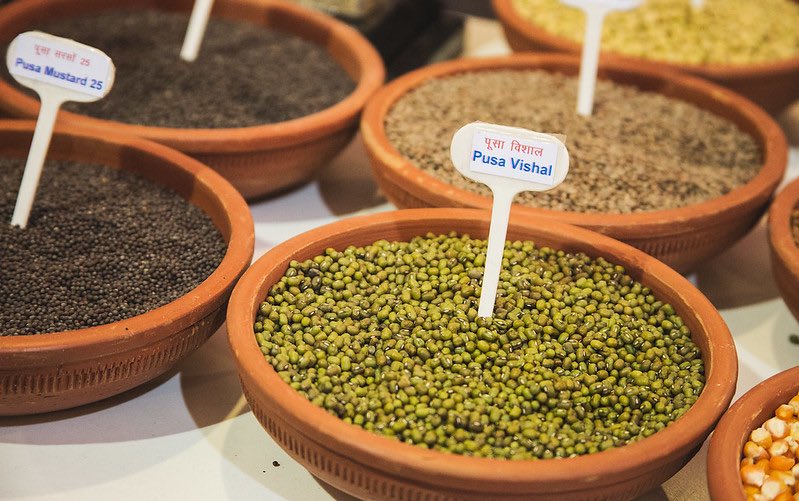In November, India decided to opt out of the Regional Comprehensive Economic Partnership (RCEP), the world’s newest and largest trading bloc, comprising one third of global GDP and trade. Indian industries and farmers’associations have widely hailed this decision. The government’s reasons for opting out of RCEP include a possible flood of cheap imports from China, increasing competition for Indian dairy farmers from New Zealand and Australia, and the existing trade deficit of $100 billion with RCEP countries.
In this post, we look specifically at India’s prospects in RCEP, focusing on agricultural trade (RCEP accounts for one-fifth of global agricultural trade). Was India’s decision to exit a hurried move failing to consider the long-term implications, or was it a good strategy, pointing policy in the right direction?
Our opinion is that had India stayed in RCEP, it could have expanded trade and explored greater opportunities to export more of the existing products to current partners (i.e. intensive margin). More importantly, India could have also expanded trade with new products, new markets and new varieties (i.e. the extensive margin)—the latter margin being the prime one for all successful large traders.
In RCEP, India would have had an opportunity to realize the untapped potential in existing exports through either lower or no tariffs. Figure 1 shows India’s top agricultural exports and their potential (estimated as the difference between current imports and exports). RCEP countries account for 28% of India’s total agricultural exports (Triennium Ending [TE] 2017). India’s top exports to RCEP are meat products, accounting for 30%, marine products fish and crustaceans (24%), oilseeds (9%), coffee and tea (8%), and animal or vegetable fats and oils (5%). There is significant export potential, i.e. unserved markets in existing trade.
Historically in trade, the biggest expansion has happened when new products, new partners and new varieties lead trade. This has been the case for the rise of China, Korea, Thailand, and now Viet Nam. Trade economists (Kehoe et. al, 2013) have found rigorous evidence to this effect while studying the trade patterns of most successful performers, e.g. Chile, South Korea, and China. Ghosh (2017) shows significant transformation in the composition of Indian exports and imports after trade liberalization in 1994/1995. India’s traditional exports such as tea and coffee and marine products shrank, and exports of food grains (including non-basmati rice, wheat), groundnut, sugar, and cotton improved substantially.
Open trade policies enable innovations
Openness to trade endogenizes innovations to access high value markets. In 2006 the Agricultural and Processed Food Products Export Development Authority (APEDA), developed GrapeNet—a traceability software system—to address complaints about quality by importers in the European Union. This web-based system helped boost grape exports to the EU. This was made possible through monitoring residues at plot level and product standardization. A study by the Indian Council for Research on International Economic Relations (ICRIER) shows that in 2015/2016, India’s table grape exports to the EU reached an all-time high of 84,482 tons. The growth in exports, facilitated by GrapeNet, was more than double the previous year’s exports.
APEDA has also developed MeatNet. If India—the second largest exporter of frozen bovine meat—were to join RCEP, it would mean direct access to the largest importer, the Chinese market. Currently, Indian bovine meat reaches China through Viet Nam. Similarly, products like pomegranate, where India is the largest producer, would have found larger markets to access, the typical extensive margin expansion.
Market creation
Any trade agreement, including RCEP, should not be looked as a zero-sum game, i.e., that an increase in imports automatically reduces domestic production. Examples from other cases can help understand the argument of market creation. Today India is globally the fourth largest automotive market. When the Indian automotive market opened in the early 1990s, global automakers had set up their base here. Slowly, as the local needs of these OEMs (Original Equipment Manufacturers) grew, a strong auto component manufacturing (ACM) base followed. ACM had to meet global standards. Many ACMs are Tier 1 suppliers to the likes of Bosch, and for cars like Mercedes, Audi, Mazda, Jaguar, and Renault-Nissan. Many are also Tier II and III suppliers to companies like Magna International, Denso, Continental, Hyundai Mobis, and ZF Lenksysteme, among others.
India feared staying in RCEP, anticipating that it would lead to a withering away of the sunshine sectors in the face of competition. Indian dairy cooperatives in particular would have faltered, trying to compete with multinationals such as Fonterra (from New Zealand). Ultimately this would have adversely affected the livelihoods of Indian farmers. However, the real threat emanates from the lack of competitiveness. RCEP would have created a competitive environment. This would have led the Indian dairy to invest in improving efficiency and productivity. Similarly, the Indian poultry sector would have faced competition from Charoen Pokphand (CP) Thailand among others. Poultry, like dairy, would be subjected to the benefits from pro-competitive effects.
According to the Global Competitiveness Index 2019, within RCEP, India is the third least competitive—above only Cambodia and Laos. Further, in the Ease of Doing Business, the Indian cost to trade is higher than even the least developing nations such as Cambodia and Myanmar (average trade cost of India between 2006 and 2015 is $1441/container compared to $951, $681 and $900 respectively for Cambodia, Myanmar, and ASEAN).
Opting out of RCEP due to the fear of increased competition at home can hurt India in several ways. First, we have foregone the market opportunities from integrating in the regional and global value chains. Second, we could have had the access to new markets for our products. Third, the trade deflection that will happen from opting out of RCEP. There can be a less direct trade deficit—but a large circumlocutory one.
Manmeet Ajmani and Vishruta Choudhary are IFPRI Research Analysts; Devesh Roy is a Senior Research Fellow with the IFPRI-led CGIAR Research on Agriculture for Nutrition and Health (A4NH). They are based in IFPRI’s South Asia Regional Office in New Delhi. This post first appeared in the Business Standard. Opinions are the authors’.







